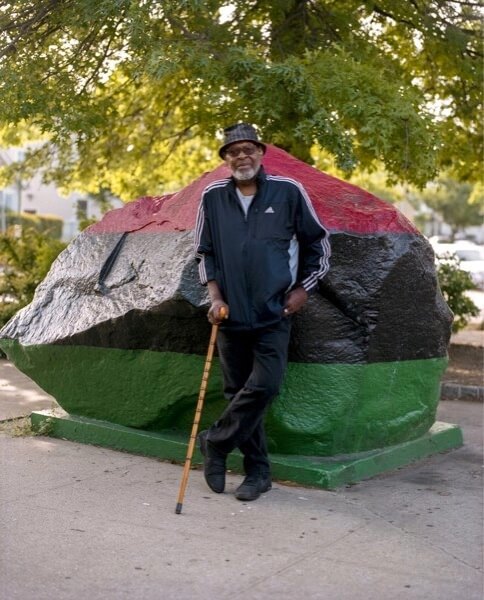By Naeisha Rose
Elias Williams, a photographer whose work has been used by the Magnum Foundation and The New York Times, will be the second individual to have his work displayed on the LinkNYC kiosks throughout Jamaica, as part of the Art to the People series curated by the non-profit A Better Jamaica.
A Better Jamaica is a community service arts organization and the Art to the People series will feature artists from southeast Queens and other parts of New York City on kiosks on Jamaica Avenue from Sutphin Boulevard to 168th Street, according to A Better Jamaica founder Greg Mays.
“I chose him because he was raised here,” said Mays about the photographer who grew up in St. Albans. “He has very fond memories of being here.”
Mays originally met Williams after hiring him to be a photo instructor to area kids who are a part of the Better Jamaica apprentice program and knew immediately after the launch of the LinkNYC kiosks in Jamaica he wanted the photographer to be a part of the series he was curating.
“When I saw the work, I was attracted to it because it was not celebrity focused,” Mays said. “I could tell how he felt about the neighborhood by how he had captured just everyday folks in the neighborhood. It is hard to do that in a photograph.”
One of his favorite photos from Williams features an elderly man standing next to Liberty Rock in St. Albans. It is a giant rock painted in pan-African colors as a symbol of black power which is a memorial for veterans of the United States Armed Forces who live in southeast Queens.
Mays said that when people talk about southeast Queens or St. Albans, their main focus is often on the foreclosure crisis, not the people or great events going on in the neighborhood, but Williams offers a different perspective.
“It’s a documentary,” said Williams about his five years of photos. “It started out as something personal about what my relationship with the community is like.”
Despite moving to the Bronx, Williams became tired of hearing the narrative about St. Albans struggling with foreclosed homes and went from doing personal work to work celebrating the people and the area.
“African-Americans from the South migrated to New York, particularly to Harlem, Bed-Stuy and St. Albans,” Williams said. “I see a larger representation of Harlem and Bed-Stuy in photos, but there is next to nothing in St. Albans, so I took on that responsibility so that the work I do will serve as a historical document of the presentday of St. Albans while also referencing its past.”
Instead of featuring African-Americans in poverty, he depicts them at their homes, barbershops, places of worship, with their family, at cafes, in sports gear and he also features cultural work and spaces for black people throughout the city and St. Albans.
“These everyday people are worthy of being celebrated,” Williams said.
Williams’ work is expected to be on the kiosks in December.
Reach reporter Naeisha Rose by e-mail at nrose



































